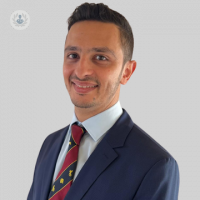Understanding erectile dysfunction: From diagnosis to treatment
Autore:Erectile dysfunction (ED) is a prevalent condition, particularly as men age. By the age of 40, approximately one in 20 men experiences persistent ED, a number that escalates to about one in seven by the age of 70. Occasional instances of ED can manifest at any age, affecting the majority of men at some point in their lives. We learn more about how erectile dysfunction can be managed in this informative article from highly respected consultant urological surgeon and andrologist Mr Michael Wanis.

How is erectile dysfunction defined?
ED denotes the incapacity to achieve or sustain an erection sufficient for sexual intercourse, often accompanied by diminished libido.
What are the key causes of erectile dysfunction?
ED can stem from a variety of factors, which can be medical and psychological. Common medical causes of erectile dysfunction include:
- obesity
- diabetes
- heart disease
- hypertension
- hormonal imbalances (such as low testosterone and thyroid issues)
Inadequate sleep or exercise, as well as certain medications, can also contribute to ED. Additionally, treatments for prostate cancer commonly result in ED, though typically, this improves within one to two years post-treatment.
How is erectile dysfunction diagnosed?
Seeking medical attention for ED is key as an array of treatment options are available. The first step is to consult your general practitioner (GP) and those with persistent or severe symptoms may be referred to a urologist specialising in male genitourinary tract issues.
The diagnostic process typically involves:
- Detailed symptom evaluation
- Comprehensive medical history assessment
- Physical examination
- Possible blood tests to analyse hormone levels, lipid profile, and blood sugar levels
- Ultrasound scans to assess penile blood flow or nocturnal penile tumescence monitoring
What are the available treatment options?
Treatment strategies for ED hinge on the underlying cause of the problem. Simple lifestyle adjustments can significantly improve ED, including:
- Smoking cessation
- Moderation of alcohol consumption
- Weight management
- Regular exercise
- Stress reduction techniques like deep breathing, yoga, and mindfulness
- Adherence to a balanced diet rich in fruits, vegetables, whole grains, and healthy fats
Psychosexual counselling, therapy, or cognitive behavioural therapy (CBT) can address underlying psychological factors contributing to ED, such as anxiety, stress, or relationship issues.
Medical interventions
Oral medications
PDE-5 inhibitors like sildenafil, tadalafil, and vardenafil enhance penile blood flow, facilitating erection upon sexual stimulation.
Topical treatments
Prostaglandin E1 creams, suppositories, or injections increase penile blood flow.
Hormone replacement therapy (HRT)
HRT correct hormonal imbalances contributing to ED.
Shockwave therapy
Low-intensity shockwave therapy may reverse vascular damage, enhancing penile blood flow.
Vacuum erection devices
Non-invasive devices can assist in achieving and maintaining erections.
Surgery
In severe cases unresponsive to other treatments, penile implant surgery (inflatable or malleable) may be recommended by a urologist.
Understanding the diagnosis and treatment options for erectile dysfunction is essential for men experiencing this condition. Seeking timely medical advice and exploring appropriate interventions can significantly improve quality of life and restore sexual function.
To schedule a consultation with Mr Wanis, visit his Top Doctors profile.


